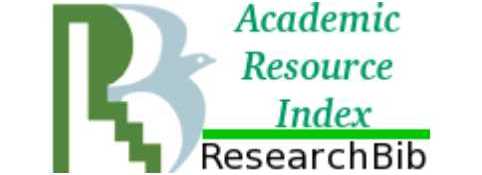DOI:
10.18413/2408-9338-2017-3-1-49-57
Kuryanovo is a settlement built on the river bank in the southeast of Moscow in the 1950s. It was built for the workers of the water treatment station serving the west of the city.
The article describes some findings of the research conducted in preparation for the exhibition «Topography of happiness: Kuryanovo», held in the «Pechatniki» exhibition hall in Kuryanovo, Moscow in March-April 2015. Video works of contemporary artists, photographs and other artifacts dedicated to the Kuryanovo microdistrict, and based on sociological research of the same name were presented at the exhibition. The project was implemented with the financial support of the Department of Culture of Moscow and the organizational support of the «Moscow Administration of the Moscow City Agency for the Development of Territories through Culture (MosArt)».
«Topography of happiness» is an artistic and research project telling about the happiness of people who live in the studied area. Through in-depth interviews with residents, their stories, experiences and individual connection with the place, we were able to find a selection of iconic places, describe how the daily life is unfolding within the given environment. The research team aimed to study the forms of interaction between people and space through the residents’ narratives, the influence of certain places and properties of the surrounding space on the emotional background – first of all, happiness – of the inhabitants.
The way how local Kuryanovo community developed in the last fifty years became one of the most interesting topics in our research. We mean the changes occurred in the Kuryanovo community since Soviet times. Initially the territory was created as a set of opportunities in urban environment: general workplace for all, public spaces, trade union, etc. However, the top-bottom approach in this case turned out to be unviable – the trade union collapsed, the only public space for community gathering (the local House of Culture) was closed down; neighbors practically stopped communicating with each other. The question of how the community functions today, what it represents and how it starts to develop again, has become one of the most interesting moments in the research.
Keywords: Urban research,
sociology of the city,
community,
local identity,
visual sociology,
felicitation,
emotions,
happiness.
Number of views: 6826 (view statistics)
Количество скачиваний: 10532
All journals
Send article
Research result. Sociology and Management is included in the scientific database of the RINTs (license agreement No. 765-12/2014 dated 08.12.2014).
Журнал включен в перечень рецензируемых научных изданий, рекомендуемых ВАК


















While nobody left any comments to this publication.
You can be first.
1. Meerovich M.G. The Birth and death of the Soviet garden city: the characters and motives of the murder. Bulletin of Eurasia. 2007. No. 1. Pp. 118-166. Russian.
2. Monitoring Agency NewsEffector together with the Foundation of regional studies «Regions of Russia». URL: http://www.gosrf.ru/news/5927/ (date of access: 30.01.2017). Russian.
3. «Happiness index of Russian cities». Russian Public Opinion Research Center (VCIOM). URL: http://tass.ru/obschestvo/3214302 (date of access: 30.01.2017). Russian.
4. «How happy you are in the Capital?» by Time Out magazine and an «Heart of the Capital». URL: http://happymoscow.timeout.ru/ (date of access: 30.01.2017). Russian.
5. Murunov Sv. «On cities in which people can't be happy». The Village, 13.10.2014. URL: http://www.the-village.ru/village/city/city-interview/166717-urbanist-svyatoslav-murunov-o-moskve-i-ostalnoy-rossii (date of access: 30.01.2017). Russian.
6. The Happy Planet Index. URL: http://www.happyplanetindex.org (date of access: 30.01.2017)
7. End of the Year survey. URL: http://www.wingia.com/en/services/end_of_year_survey_2014/global_results/8/45/ (date of access: 30.01.2017)
8. Weber M. Selected works. Moscow: Progress, 1990. Russian.
9. Weber M. The Basic sociological concepts. Western European sociology of XIX century. Texts. Moscow, 1996. Russian.
10. Durkheim E. Suicide: Sociological etude. Moscow: Thought, 1994. Russian.
11. Durkheim E. Sociology. Its subject, method, purpose. Moscow: Kanon, 1995. Russian.
12. Simmel G. Favorites. In 2 T. Moscow: Yurist, 1996. Russian.
13. Parsons T. The Notion of a society: components and relationships. American sociological thought: Texts. Moscow, 1996. Russian.
14. Parsons T. The System of coordinates of the action and the General theory of action systems: culture, personality and place of social systems. The Structurally functional analysis in modern sociology. Newsletter of the SAA. Series: translations and abstracts. 1968. Vol. 1. No. 6. Russian.
15. Parsons T. About structure of social action. Moscow: Academic project, 2000. 680 p. Russian.
16. Dinner E. Talk and happiness. Moscow, 2003. Russian.
17. Boniwell I. The Keys to prosperity: What can positive psychology. Moscow: Time, 2009. Russian.
18. Argyle M. Psychology of happiness. Saint-Petersburg, 2003. Russian.
19. «Index of happiness». Russian Public Opinion Research Center (VCIOM). URL: https://wciom.ru/news/ratings/indeks_schastya/ (date of access: 30.01.2017). Russian.